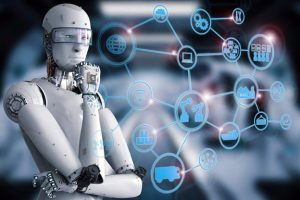- 10 July 2024
- 309
Exploring the Future of Digital Twins in Various Industries

Introduction:
In today’s rapidly evolving technological landscape, digital twins have emerged as a transformative force across multiple industries. From manufacturing to healthcare, these virtual replicas offer unprecedented insights and efficiencies. As we delve into their applications and future possibilities, let’s explore how digital twins are reshaping the future of industries worldwide.
What are Digital Twins?

Digital twins are virtual representations of physical objects, processes, or systems. They are created using real-time data from sensors, IoT devices, and other sources to mimic the behavior and characteristics of their physical counterparts. This technology enables businesses to monitor, analyze, and optimize operations in a virtual environment.
Applications in Manufacturing
In the manufacturing sector, digital twins simulate production lines and equipment, allowing for predictive maintenance, process optimization, and virtual testing of new designs. They minimize downtime, reduce costs, and enhance overall operational efficiency.
Enhancing Efficiency in Healthcare
Digital twins are revolutionizing healthcare by creating virtual models of patients, organs, and medical devices. This technology aids in personalized treatment planning, surgical simulations, and monitoring patient health in real-time, leading to improved outcomes and reduced healthcare costs.
Digital Twins in Smart Cities
Smart cities leverage digital twins to optimize urban planning, infrastructure management, and public services. By modeling transportation systems, energy grids, and environmental factors, cities can predict and mitigate potential challenges while enhancing sustainability and livability for residents.
Challenges and Limitations
Image by : Yandex.com 2
Despite their benefits, digital twins face challenges such as data privacy concerns, interoperability issues between different systems, and the complexity of managing vast amounts of real-time data. Overcoming these hurdles is crucial for widespread adoption across industries.
Future Innovations and Trends
Looking ahead, advancements in AI, machine learning, and 5G technology will further enhance the capabilities of digital twins. Anticipated trends include more sophisticated predictive analytics, real-time simulations with augmented reality interfaces, and broader integration across IoT ecosystems.
Visual Table: Key Points
| Industry | Applications | Benefits |
| Manufacturing | Production optimization, predictive maintenance | Reduced downtime, cost savings |
| Healthcare | Personalized treatment plans, surgical simulations | Improved patient outcomes, lower healthcare costs |
| Smart Cities | Urban planning, infrastructure management | Enhanced sustainability, efficiency |
Conclusion:
In conclusion, digital twins represent a paradigm shift in how industries operate and innovate. From manufacturing and healthcare to smart cities, the potential applications are vast and promising. As technology continues to evolve, embracing digital twins promises to unlock new efficiencies, improve decision-making, and drive sustainable growth across diverse sectors.

